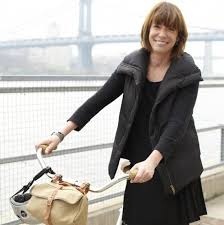 On the evening of 26 May, I attended a long awaited talk by Janette Sadik-Khan, former Commissioner of New York City Department of Transportation from 2007-2013 under the Bloomberg administration. Her most celebrated project was a conversion of a segment of Broadway into a pedestrian plaza but this was part of a much larger body of work in which the Department of Transport would paint, measure results of and then finalise street re-designs.
On the evening of 26 May, I attended a long awaited talk by Janette Sadik-Khan, former Commissioner of New York City Department of Transportation from 2007-2013 under the Bloomberg administration. Her most celebrated project was a conversion of a segment of Broadway into a pedestrian plaza but this was part of a much larger body of work in which the Department of Transport would paint, measure results of and then finalise street re-designs.
This event was on another level of scale to previous Auckland Conversations I have attended, held in the Aotea Centre ASB Theatre rather than the usual side room, showing the sheer level of public interest in transport issues in Auckland. One of Sadik-Khan’s opening contentions was that “we’re not going to achieve healthy, safe, sustainable cities by planning just for cars.” Her experience in New York was that there is a “deep hunger” for public space and when a street is opened to people, they “materialise like in Star Trek.” New York is so densely populated that they experience “ped-lock” (pedestrian gridlock). A performance group painted lanes on some footpaths labelled ‘Residents’ and ‘Visitors’ as a response to the two-speed use of pavements. People actually used them.
There was huge opposition to the closing of streets and removal of parking. A lot of the initial concern was alleviated by the impermanence of installations; much of the work was done with orange barrels, paint and deck chairs. Sadik-Khan noted that the speed with which she was able to free up public space so quickly was because of the paint-on-the-road, temporary installation nature of the changes. Conventional modelling and detailed design of more permanent, built barriers and installations would have taken at least 5 years to achieve the same result. Post pedestrianisation of Times Square there was a 63% drop in motoring injuries and a 74% drop in pedestrian injuries. Mayor Bloomberg was very data-driven. One of his favourite sayings being: “In God we trust, everyone else bring data.”
Street seating is very important in a streetscape, not just for the obvious amenity but also to soften the line between pavement and street. Sadik-Khan’s team moved very quickly; 643 kilometres of cycle-lanes were created in just 6 years. A study showed that at any time, 10% of New Yorkers are lost hence a major focus on way finding. Planning regulations creating parking minimums and car-dominated streetscapes are the result of outmoded approaches: “If you were a businessperson and didn’t change your biggest capital asset for 50 years, would you still expect to be in business?” With an aging population, it is important that we provide accessible infrastructure, remembering that “we are all only temporarily able.”
Sadik-Khan identified Tax Increment Financing (TIF) as a primary funding source for transport infrastructure. This echoed the views of Professor Peter Newman, a recent previous speaker at Auckland Conversations. “Density is destiny”, transport options grow with density and become part of the real estate value. Retailers are often trenchant critics of the removal of parking spaces along streets. Sadik-Khan advises starting a dialogue with locals and retailers to discuss with them the proven value of more walking and cycling along main streets but also to keep parking where possible such as through the use of ‘Copenhagen lanes’. Final words: “You just have to find your streets. They’re hidden in plain sight.”
New York – A City for People Auckland Conversation presentation online
